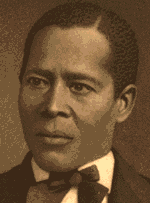|
|

The Underground Railroad: Cloaked Gateway to Freedom
|

|
|
Share This Page
|
|
|
|
|
|
|
Follow This Site

|
 |
|
|
|
|

|
Part 2: Prices of Freedom
People who helped runaways escape to freedom were often called "conductors," in keeping with the railroad terminology. One of the most famous conductors was Harriet Tubman, herself a runaway slave. Tubman was called the "Moses" of her people because she helped more than 300 runaways, including her own elderly parents.
Other noted "conductors":
- Josiah Henson, whose autobiography was the inspiration for Uncle Tom's Cabin, escaped to Canada on the Underground Railroad and then risked his life and his freedom time and again to bring other runaways to his new home;
- James Fairfield, a white abolitionist who went into the Deep South and rescued enslaved African Americans by posing as a slave trader;
- African-American abolitionist John Parker of Ripley, Ohio, who frequently ventured to Kentucky and Virginia and helped
 transport by boat hundreds of runaways across the Ohio River; transport by boat hundreds of runaways across the Ohio River;
- William Still (right), a free African-American who helped as many as 60 runaways a month escape, often hiding them in his Philadelphia home;
- Thomas Garrett, a Quaker whose house in Wilmington, Delaware, was a station. He helped more than 2,000 runaways escape to freedom.
In addition to conductors, the Underground Railroad also had other names associated with it, among them:
- Agent: someone who planned an escape route for a runaway;
- Baggage: runaway slave(s);
- Brakeman: a person who helped contact runaways, telling them of what was ahead;
- Bypass: an escape route that had been changed because the original route had been discovered;
- Freedom line: the route of travel for a runaway;
- Load of potatoes: a group of runaways hidden under hay bales, food, or other things carried in large quantities;
- Sanctuary: a safe place;
- Station master: someone in charge of a safe house or sanctuary.
Most runaways were men between the ages of 16 and 35. Women and children escaped, too, but not in the numbers that men did. Many men made the escape and then returned for their family members or hoped that they would make it safely to join them in their new home.
Some amazing stories also emerged, including these ingenious escapes:
- Frederick Douglass disguised himself as a free sailor and sweated out his escape from Maryland to New York;
- Henry "Box" Brown had himself packed in a crate and shipped by train from Richmond, Virginia, to Philadelphia;
- Ellen and William Craft of Georgia posed as master and slave to help both escape.
 Songs were also used as coded messages, directing slaves on the path to freedom. "Swing Low, Sweet Chariot"; "Steal Away to Jesus"; and "Go Down Moses" were all examples of how music could be used to impart information. Some of the lyrics to these songs were used to describe parts of the route to freedom. Another excellent example is the popular spiritual "Follow the Drinking Gourd," a reference to the North Star, which helped runaways keep their bearings on dark nights. Songs were also used as coded messages, directing slaves on the path to freedom. "Swing Low, Sweet Chariot"; "Steal Away to Jesus"; and "Go Down Moses" were all examples of how music could be used to impart information. Some of the lyrics to these songs were used to describe parts of the route to freedom. Another excellent example is the popular spiritual "Follow the Drinking Gourd," a reference to the North Star, which helped runaways keep their bearings on dark nights.
Quilts were often thought to have been used as well, as maps or codes to help direct runaways along the Underground Railroad to freedom. Slaves made these quilts themselves and shared them with others. Also, Quakers and other people sympathetic to the plight of runaways hung quilts on their porches, as signposts on the path to freedom.
Next
page > In the End > Page 1, 2, 3
|
|



 transport by boat hundreds of runaways across the Ohio River;
transport by boat hundreds of runaways across the Ohio River;
 Songs were also used as coded messages, directing slaves on the path to freedom. "Swing Low, Sweet Chariot"; "Steal Away to Jesus"; and "Go Down Moses" were all examples of how music could be used to impart information. Some of the lyrics to these songs were used to describe parts of the route to freedom. Another excellent example is the popular spiritual "Follow the Drinking Gourd," a reference to the North Star, which helped runaways keep their bearings on dark nights.
Songs were also used as coded messages, directing slaves on the path to freedom. "Swing Low, Sweet Chariot"; "Steal Away to Jesus"; and "Go Down Moses" were all examples of how music could be used to impart information. Some of the lyrics to these songs were used to describe parts of the route to freedom. Another excellent example is the popular spiritual "Follow the Drinking Gourd," a reference to the North Star, which helped runaways keep their bearings on dark nights.
